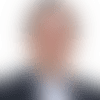The gems of a draft class aren't always first-round picks, and the picks that disappoint aren't always the third-day fliers. College Football 24/7 takes a look at the best and worst picks of each team in the NFL with respect to value and fit rather than overall talent, here focusing on the NFC North.
Chicago Bears
Best: WR Kevin White, Round 1 (No. 7 overall)
The Bears have hitched their offensive wagon to Jay Cutler, and if it's ever going to roll at peak performance, an abundance of weapons surrounding the interception-prone quarterback is a must. White was brought in to replace Brandon Marshall's productivity, and he could do that and then some as a rookie.
Worst: RB Jeremy Langford, Round 4 (No. 106 overall)
In a physical division like the NFC North, Langford isn't a very physical rusher. If the Bears are counting on Langford to be a third-down specialist, he might be fine. But if they're looking for more, he could disappoint. David Cobb from Minnesota would have been a better pick from a toughness standpoint.
Detroit Lions
Best: RB Ameer Abdullah, Round 2 (No. 54 overall)
The former Nebraska star was the fourth running back chosen in the draft, and the Lions got good value for him in the latter half of the round. He explodes through the smallest of holes and can catch the ball exceptionally well. Fumbling is a concern on Abdullah, but if he proves trustworthy in securing the ball, the Lions will put it in his hands a lot.
Worst: FB Michael Burton, Round 5 (No. 168 overall)
Burton will have to make the team as a special-teams contributor and probably won't offer much to the Lions' offense. He is a solid pass catcher but not an especially good blocker. Even in an H-back role that would emphasize his receiving skills, he'd still have to be a solid blocker at the next level -- and he might not be up to that task. His scouting report projection? Undrafted.
Green Bay Packers
Best: DB Damarious Randall, Round 1 (No. 30 overall)
The Packers addressed a need with Randall and got a versatile talent who should make as much of an impact as anyone picked late in Round 1. The Packers will give him a look at cornerback, but the beauty of this pick is that Randall can move to safety, and potentially flourish there, if cornerback isn't his calling. The Packers are building a dynamic young secondary for the future with back-to-back first-round picks the last two years, plus a 2015 second-rounder (Quinten Rollins). Randall figures to be a major factor in the youth movement.
Worst: WR Ty Montgomery, Round 3 (No. 94 overall)
Montgomery didn't look like the same player last year as he did as a junior in 2014, and the result was a slip in the draft. In a deep group of receivers at the Senior Bowl, he didn't stand out as much as a couple of guys picked after him, including East Carolina's Justin Hardy and Jamison Crowder. He's strong, physical and can get the extra yard to move the chains, but his penchant for drops is a big concern.
Minnesota Vikings
Best: OL T.J. Clemmings, Round 4 (No. 110 overall)
This just might turn out to be the steal of the draft if the concerns on Clemmings -- from medical reports to his raw, unpolished technique -- are overcome quickly and easily. Although Clemmings has the frame and athleticism to play left tackle, his lack of college experience demands that he stay on the right side for the time being. As a third-day pick, Clemmings represented an incredible value for the Vikings.
Worst: DE Danielle Hunter, Round 3 (No. 88 overall)
Hunter has all the physical tools to be a quality pass rusher and the Vikings took him about where he was projected to fall. But he's not much of a finisher (1.5 sacks last year) and as a rookie, he'll be more of a developmental player than a productive one. He does play the run effectively, which a lot of pass rushers can't claim, but if he doesn't develop as a pass rusher in the NFL, he likely won't justify a top-100 pick.
Follow Chase Goodbread on Twitter @ChaseGoodbread.












